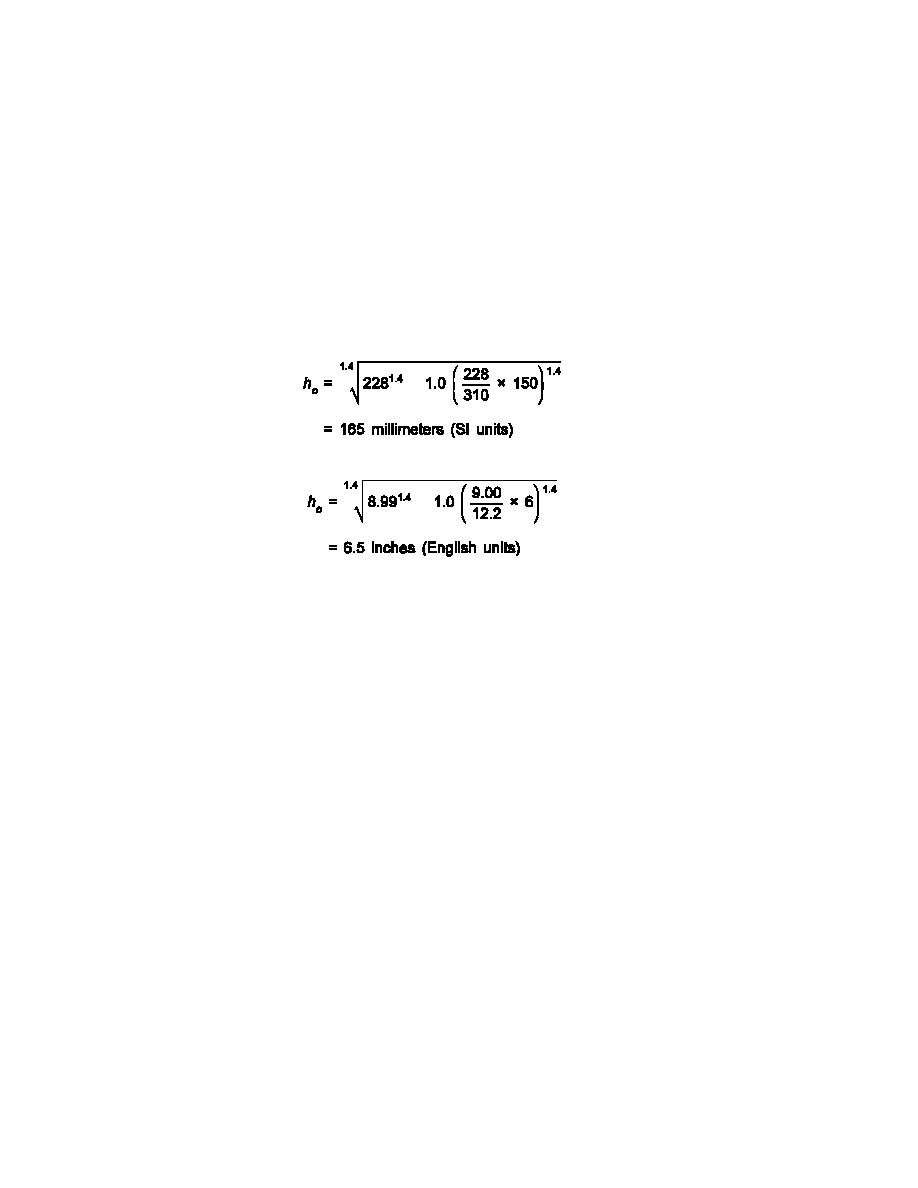
UFC 3-260-02
30 June 2001
partially bonded overlay equation (Equation 17-2). Use of this equation requires that hd be the
thickness of fibrous concrete from the appropriate fibrous concrete design curve. The design
thickness of fibrous concrete pavement is determined from Figure 14-4 to be 228 millimeters
(9 inches) using the design flexural strength of the fibrous concrete overlay (6.2 MPa (900 psi))
and k value of (27 MN/m3 (100 pci)) for the existing rigid pavement foundation. The design
thickness of plain concrete, using the flexural strength of the existing pavement (4.8 MPa
(700 psi)) and k of 27 MN/m3 (100 pci) for the existing foundation strength, is 310 millimeters
(12.2 inches). Since the existing rigid pavement is plain concrete, hE = 150 millimeters (6 inches);
substituting these values in the partially bonded overlay equation yields a required thickness of
fibrous concrete overlay of:
&
&
7. PRESTRESSED CONCRETE OVERLAY OF RIGID PAVEMENT. A prestressed concrete overlay
may be used above any rigid pavement. The procedure for designing the prestressed concrete
overlay is to consider the base pavement to have a k value of 135 MN/m3 (500 pci) and design the
overlay as a prestressed concrete pavement on grade.
8. RIGID OVERLAY OF EXISTING FLEXIBLE OR COMPOSITE PAVEMENT. Any type of rigid
overlay may be used to strengthen an existing flexible or composite pavement. The existing
pavement is considered to be a composite pavement when it is composed of a rigid base pavement
that has been strengthened with 100 millimeters (4 inches) or more of nonrigid (flexible or all-
bituminous) overlay. If the nonrigid overlay is less than 100 millimeters (4 inches), the rigid overlay
is designed using the nonbonded overlay equation. The design of the rigid overlay will follow the
procedures outlined in Chapters 12 through 16 of this document. The strength afforded by the
existing pavement will be characterized by the modulus of soil reaction k determined using the
plate bearing test, or Figure 8-1. The following modifications or limitations apply: (a) The plate
bearing test will be performed when the pavement temperature equals or exceeds the maximum
ambient temperature for the hottest period of the year, and (b) in no case will a k value greater
than 135 MN/m3 (500 pci) be used for design. When Figure 8-1 is used to estimate the k value at
the surface of the existing flexible pavement, the bituminous concrete portion will be assumed to
be unbound base material since its performance will be similar to a base course.
9. NONRIGID OVERLAY OF EXISTING RIGID PAVEMENT.
a. General. Two types of nonrigid overlay, all-bituminous concrete overlay, and flexible
overlay, may be used with certain reservations to strengthen an existing rigid pavement.
17-11



 Previous Page
Previous Page
